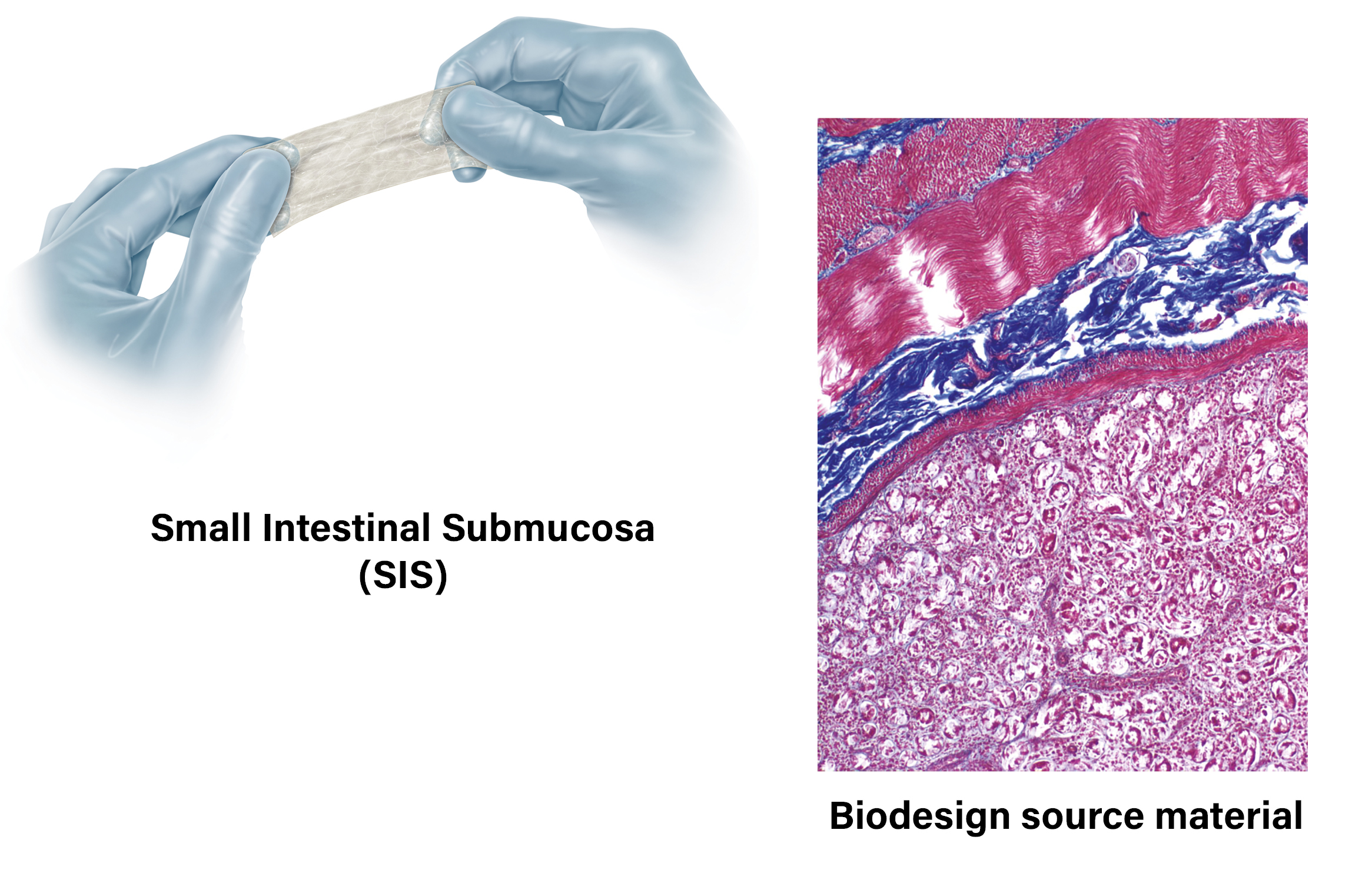Ventral rectopexy is one option for repairing rectal prolapse. Surgeons should use their own judgement to decide which procedure fits each patient.
Biodesign Advanced Tissue Repair products are sourced from porcine small intestinal submucosa (SIS).
Over the course of several months, the patient’s own healing mechanisms incorporate the SIS into the adjacent tissues until it can no longer be detected, resulting in new, remodelled tissue.1,2

SIS technology
SIS is derived from porcine small intestinal submucosa, a naturally occurring ECM (extracellular matrix) located between the mucosal and muscular layers of the small intestine. A complex organization of collagen and other molecules that forms a fibrous matrix, the submucosal layer of the intestine is responsible for most of its strength.
SIS provides a natural scaffold that allows the body to restore itself through site-specific tissue remodelling.

Tissue Remodelling
Tissue remodelling is a complex natural process that involves the recruitment of cells,
the renewal of tissue composition, and the reinforcement of structural tissue architecture.3
As the body heals, SIS is gradually remodelled and integrated into the body, leaving behind organized tissue that provides long-term strength.1,4,5
SHOW REFERENCES
1. Franklin ME Jr, Trevino JM, Portillo G, Vela I, Glass JL, Gonzalez JJ. The use of porcine small intestinal submucosa as a prosthetic material for laparoscopic hernia repair in infected and potentially contaminated field: a long term follow-up. Surg Endosc. 2008;22(9):1941-1946.
2. Fu CWP, Stevenson ARL. Risk factors for recurrence after laparoscopic ventral rectopexy. Dis Colon Rectum. 2017;60(2):178-186.
3. Turner NJ, Badylak SF. Biologic scaffolds for musculotendinous tissue repair. Eur Cell Mater. 2013;25:130-143.
4. Stelly M, Stelly TC. Histology of CorMatrix bioscaffold 5 years after pericardial closure. Ann Thorac Surg. 2013;96(5):e127-e129.
5. Badylak S, Kokini K, Tullius B, Whitson B. Strength over time of a resorbable bioscaffold for body wall repair in a dog model. J Surg Res. 2001;99(2):282-287.
The Biodesign Rectopexy Graft is intended to support/reinforce soft tissue in surgical procedures for open and laparoscopic repair of rectal prolapse/rectal intussusception.
The graft is derived from a porcine source and should not be used for patients sensitive to porcine material.
| Description | Product code | NHS Order code |
|---|---|---|
| Biodesign Rectopexy Graft | C-BRG-7X20-2 | FVQ2208 |
At the heart of healthcare
